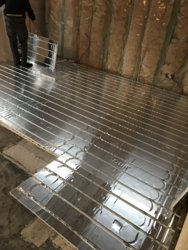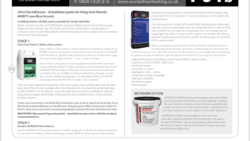S
Shinyshiny054
Hello,
I’m new to tiling and to forums so my apologies for both if there are any etiquette failures!
I’ve scoured the internet and can’t find any tangible advice on tiling on over overfloor heating. We installed the Wundafloor EPS 400 system ourselves (other half and I) and are concerned about the loops which sit proud of the boards. I called Wundafloor and the advice was to tape the loops down. We’d already done this but pushing on the loops with a foot still allowed a fair amount of bounce. We were told that Granfix ultimate flex with ultra prime it would provide enough protection to the tiles from th bounce. We are doing an entire ground floor so naturally I’m concerned being a) a complete novice and b) that we lay it all and the tiles crack or lift.
Has anyone laid tiles over such a system and what are your recommendations? Will we be ok with the adhesive only, will it absorb the bounce as we’ve been advised? We have limited height to which we can tile, but we’re planning on a 10mm adhesive layer (though have been recommended 6mm by Wundafloor)
Tiles are porcelain 605x605mm
Many thanks
Gill
I’m new to tiling and to forums so my apologies for both if there are any etiquette failures!
I’ve scoured the internet and can’t find any tangible advice on tiling on over overfloor heating. We installed the Wundafloor EPS 400 system ourselves (other half and I) and are concerned about the loops which sit proud of the boards. I called Wundafloor and the advice was to tape the loops down. We’d already done this but pushing on the loops with a foot still allowed a fair amount of bounce. We were told that Granfix ultimate flex with ultra prime it would provide enough protection to the tiles from th bounce. We are doing an entire ground floor so naturally I’m concerned being a) a complete novice and b) that we lay it all and the tiles crack or lift.
Has anyone laid tiles over such a system and what are your recommendations? Will we be ok with the adhesive only, will it absorb the bounce as we’ve been advised? We have limited height to which we can tile, but we’re planning on a 10mm adhesive layer (though have been recommended 6mm by Wundafloor)
Tiles are porcelain 605x605mm
Many thanks
Gill



